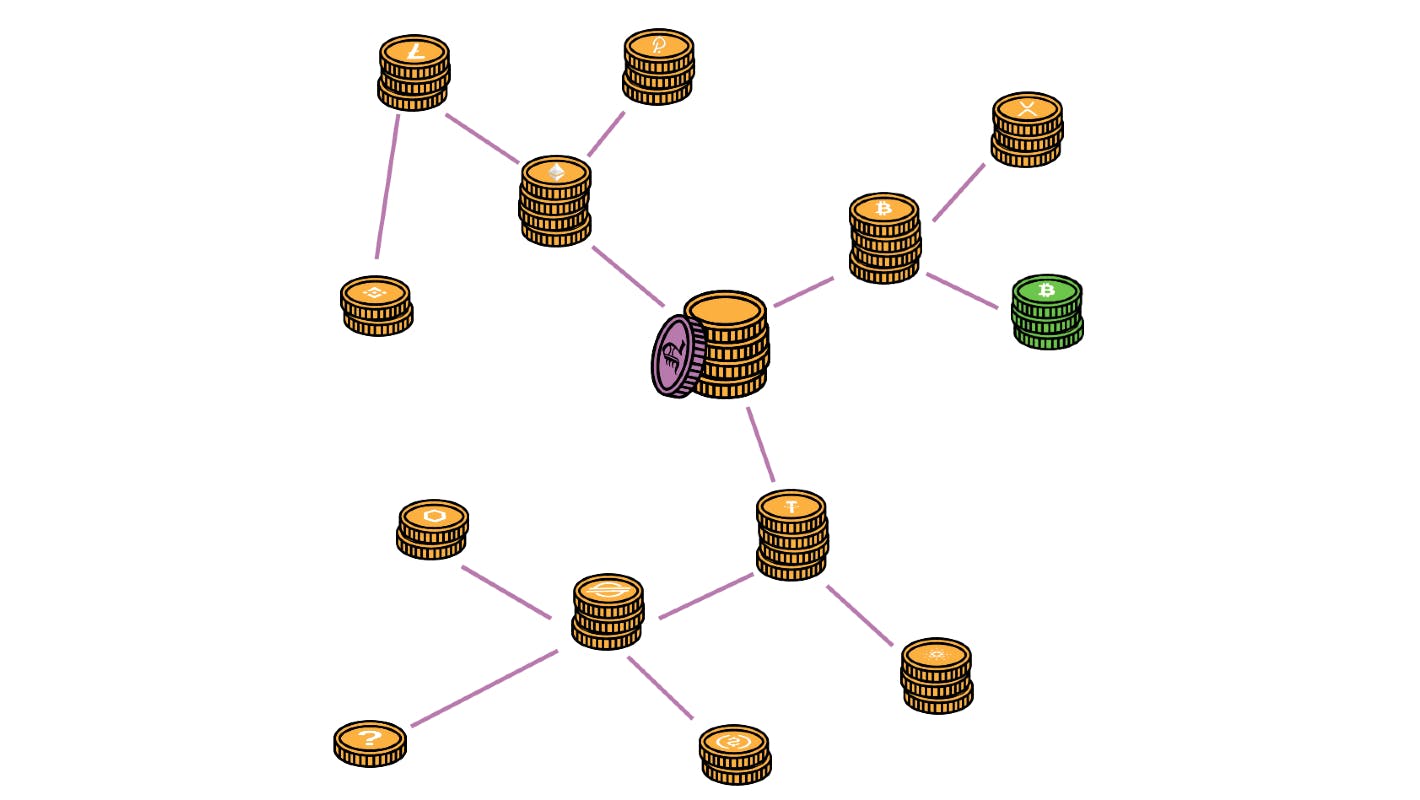August 24, 2021 | Max Atallah

#5 Legal Analysis of Polkadot (DOT)
Since the beginning of this year, we have been publishing articles on different cryptocurrencies and their legal framework within the EU and the U.S. This time we will cover Polkadot – the promising multi-chain network aiming to connect different blockchains into a single unified network.
If you missed our previous article on Litecoin (LTC), you can find it in our news under the "blockchain" category.
Polkadot (DOT) in a Nutshell
The Polkadot network protocol was created by Gavin Wood, co-founder of Ethereum, and is developed by the Web3 Foundation. Having published its whitepaper in October 2016 and its first ICO in October 2017, raising over 145 million USD, the Polkadot platform rapidly became one of the most assuring blockchain projects, with its native token DOT recently almost slamming the 50 dollar threshold – DOT’s current all-time high of 49,35 dollars (May 2021).
Polkadot is a platform allowing diverse blockchains to transfer messages and value in an interoperable fashion between all smart contract capable blockhains. This broad scalability is arguably one of, if not the most important, competition advantages of Polkadot. The network’s interoperability with other blockchains, through so-called Substrate or other bridging technology, especially to Ethereum, makes Polkadot a worthy alternative for software developers and existing crypto operators seeking for cost effective and efficient solutions. This multi-chain technology, together with comparatively low fees, has ensured Polkadot its position in the industry, being today the 8th biggest cryptocurrency by its current market cap.
Most visibly, Polkadot’s native token DOT is used like the majority of other cryptos, i.e., to transfer value between people. Fundamentally, the DOT token is used to carry out the key functions on the Polkadot platform, i.e., governance, staking, and bonding. The holders of DOT can thereby govern the network, stake their DOT’s in exchange of rewards, and bond the token to add new so-called parachains, a type of distinctive blockchains, to the network.
U.S. Regulation of DOT
The Financial Crimes Enforcement Network (FinCEN) has stated that based on their interpretation the Bank Secrecy Act applies to cryptocurrencies. Although FinCEN does not consider cryptocurrencies as legal tender, it considers cryptocurrency exchanges – such as Binance and Coinbase – being money transmitters, and by that included in FinCEN’s jurisdiction.
As we have already mentioned in our earlier articles, it is hard to find a uniform regulatory approach to cryptocurrencies in the U.S, where each State has their own regulation on money transmission and virtual currency. As cryptocurrency exchanges are usually involved in fiat-money transmissions, they are obligated to follow money transmission regulations. In addition, New York and Louisiana have their own cryptocurrency licences, which are a stricter way of regulating cryptocurrency exchange operations.
The different interpretations of U.S. authorities are neither making the regulatory framework any clearer. For example, the Internal Revenue Service (IRS) sees cryptocurrencies as property and has issued tax guidance on the matter, whereas the Commodities Futures Trading Commission (CFTC) encompasses cryptocurrencies to be commodities as described in the Commodity Exchange Act. Meanwhile, the Securities and Exchange Commission (SEC) has been indicating that it considers certain cryptocurrencies to be securities by applying the so-called Howey Test, despite its origin in traditional investment contracts, e.g., securities. Under the Howey test, the following questions determine the legal nature of a transaction:
- Did purchasers of a financial instrument contribute money (or valuable goods or services)?
- Did purchasers invest in a common enterprise?
- Were purchasers reasonably expecting to earn profits through that enterprise?
- Were the expected profits derived from the efforts of others (e.g., a third party)?
Based on these four (4) criteria’s, it is clear that the test is constructed around centralized activities, whereby its overall applicability regarding decentralized cryptocurrencies can be rightly questioned from a legal perspective. It is easy to state that the Howey test with its origin in year 1946 is outdated in the assessment of crypto transactions anchored in blockchain networks such as Polkadot.
EU Regulation of DOT
As the EU cryptocurrency legislation is more straightforward than in the U.S., it is easier to portray the regulatory status of DOT within the EU. Simply put, DOT is considered to be a cryptocurrency and not a security. As described in the Fifth Money Laundering Directive (5AMLD), virtual currencies are defined as a digital representation of value i) that is not issued or guaranteed by a central bank or a public authority, ii) is not necessarily attached to a legally established currency and does not possess a legal status of currency or money but is accepted by natural or legal persons as a means of exchange and iii) which can be transferred, stored, and traded electronically. Therefore, entities trading DOT, and other cryptocurrency service providers are obligated by the EU Member State’s implementation of the 5AMLD and other national regulation, being subject to conventional EU regulation on customer due diligence, risk assessments, Fit & Proper as well as other applicable national legislation.
Based on the 5AMLD some Member States have established a stricter license system for cryptocurrencies, whereas other Member States just require entities to follow general money laundering regulations. However, from a longevity standpoint it is recommendable to comply with the stricter Member States cryptocurrency legal frameworks as an upcoming EU Regulation is going to make the EU-wide cryptocurrency requirements quite similar to those of the stricter legal frameworks.

24.08.2021 MAX